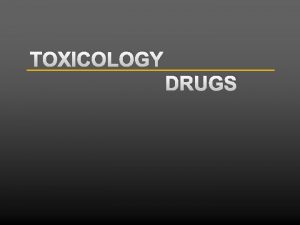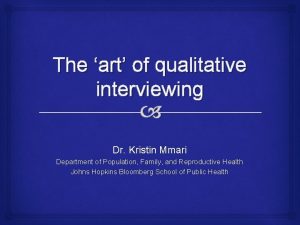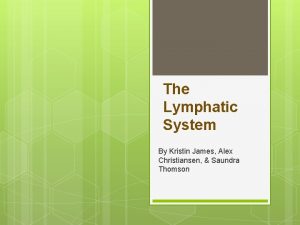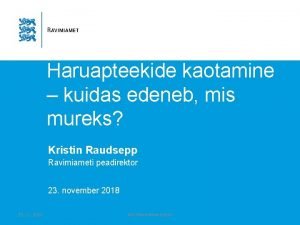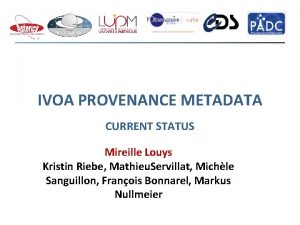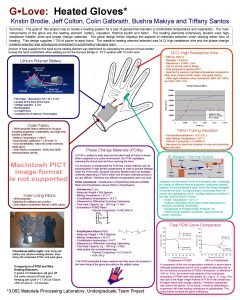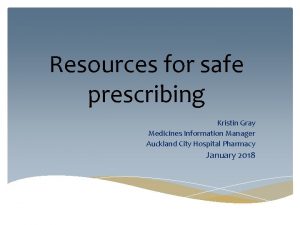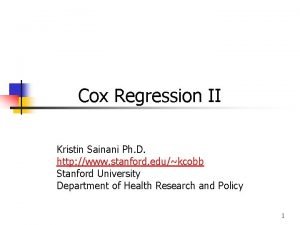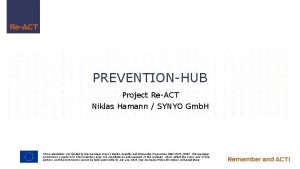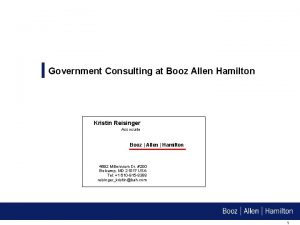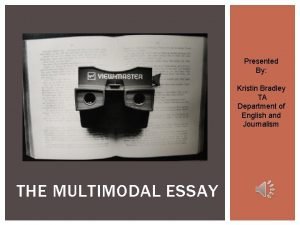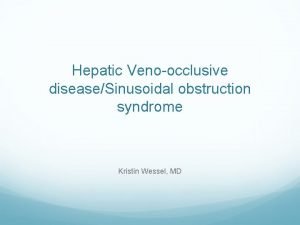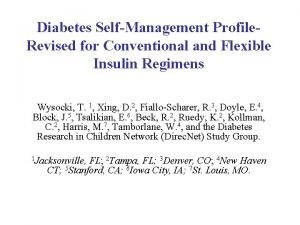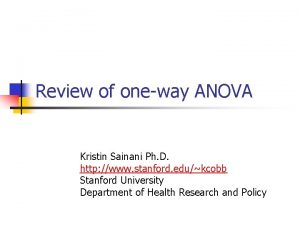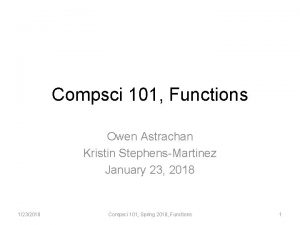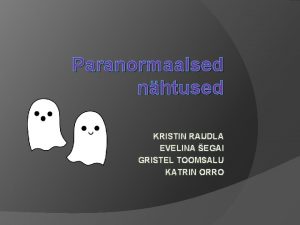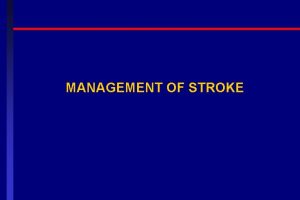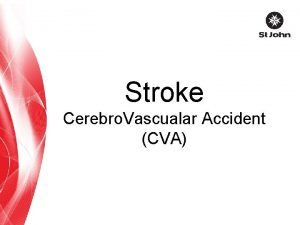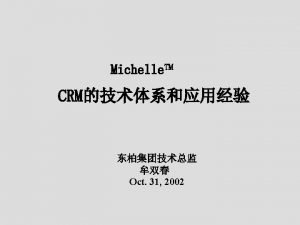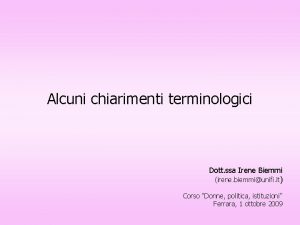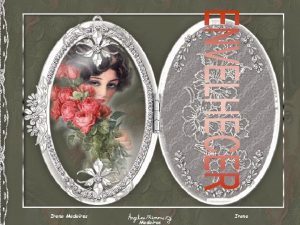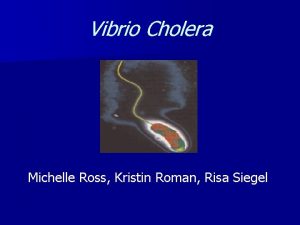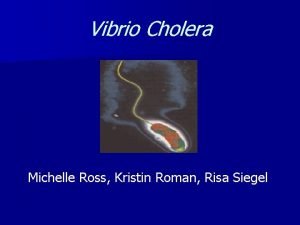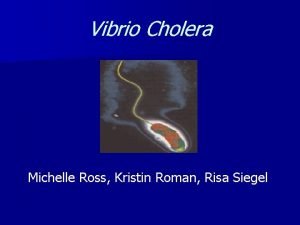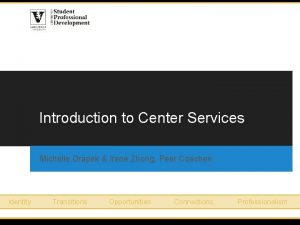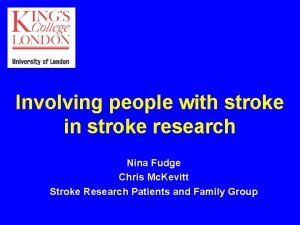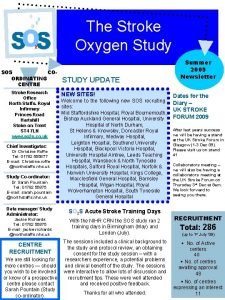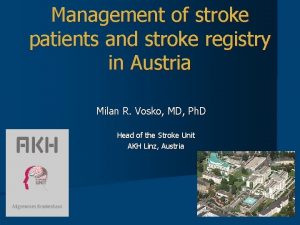Case 18 Stroke Irene Wu Kristin Grunklee Michelle





























- Slides: 29

Case 18: Stroke Irene Wu, Kristin Grunklee, Michelle Tran NTRS 415 B June 8, 2012

Meet R. N. Patient RN is a 77 YOWM European American descent

Chief Complaint R. N. ’s husband stated: “My wife woke up this morning with everything pretty normal, but in the middle of the morning, she became dizzy, and then she couldn’t talk or move one side her body. ”

History of Present Illness R. N. was transported to the ER room of University Hospital with the symptoms of slurred speech, numbness on the left side of her face, and weakness of her left arm and leg.

Social History Pt. does not smoke or drink alcohol and does not take any recreational drugs. No one in the household smokes. Pt. lives with husband age 82, has been married for 56 years and is a retired hairdresser. R. N. and spouse both purchase and prepare food.

Physical Exam General appearance: Elderly female who is unable to speak; unable to move right side Vitals: Temp 98. 6 F, BP 138/88 mm Hg, HR 91 bpm, RR 18 bpm Heart: Regular rate rhythm, no gallops or rubs, point of maximal impulse at the fifth intercostal space in the midclavicular line

Physical Exam (cont. ) HEENT: Head: Normocephalic Eyes: Wears glasses for myopia Ears: Tympanic membranes normal Nose: WNL Throat: Slightly dry mucous membranes w/out exudates or lesions

Physical Exam (cont. ) �Genitalia: Normal w/out lesions �Neurologic: New-onset weakness of the right side involving right arm and leg. Face and arm weakness is disproportionate to leg weakness, and sensation is impaired on the contralateral side. Dysarthria with tongue deviation. Cranial nerves III, V, VII, and XII impaired. �Motor function tone and strength diminished. Plantar reflex decreased on right side. Blink reflex intact. �Extremities: Reduced strength, bilaterally

Pathophysiology What is a stroke? Interruption of blood flow in any area of the brain Brain’s function is altered Affected parts start to die Two types of stroke Ischemic stroke Hemorrhagic stroke

Ischemic Stroke vs Hemorrhagic Stroke Ischemic Stroke Hemorrhagic Stroke

Signs and Symptoms Numbness and weakness of face, arm or leg Trouble seeing or speaking Confusion Dizziness and loss of balance Severe headache with no known cause

Common Diagnostic Tests View of brain and spinal cord View of blood vessels View and check function of heart NIH stroke scale

View of Brain and Spinal Cord CT scan MRI scan

View of Blood Vessels Carotid ultrasound MRA Cerebral arteriogram

View and Check Functions of Heart Echocardiogram EKG

NIH Stroke Scale

Commonly Prescribed Drugs & Surgical Treatment Commonly Prescribed Drugs acetaminophen/Tylenol Thrombolytic agent rt. PA Warfarin and enoxaparin Aspirin Surgical Treatment Carotid endarterectomy Craniotomy

RN’s Stroke Case Ischemic stroke Diagnose with CT scan Intravenous rt. PA Acetaminophen/Tylenol for pain No surgical treatment

Final Nutrition Care Plan Nutrition Assessment PMH ▪ HTN x 10 yrs ▪ Hyperlipidemia x 2 yrs Lab Values ▪ CHOL 210 ▪ HDL 40 ▪ LDL 155 ▪ TG 198 ▪ BP 138/88

Final Nutrition Care Plan Nutrition Assessment (con) Anthropometric Data ▪ ▪ ▪ Sex: Female Age: 77 Height: 5’ 2”/ 62 in/ 157. 48 cm/ 1. 57 m Weight: 165 lbs/75 kg Actual: 165 lbs Usual: 165 lbs % UBW: 100% Ideal: 110 lbs %Ideal: 150% BMI: 31 (obese) Albumin: 4. 2 g/d. L WBC: 10 x 103/mm 3

Final Nutrition Care Plan Nutrition Assessment (con) Diet History ▪ Good appetite ▪ Tries to avoid fried food ▪ Does not add salt to anything ▪ No previous nutrition therapy ▪ Takes multivitamin daily and 500 mg calcium 3 x day ▪ Current diet order NPO

Final Nutrition Care Plan Nutrition Assessment (con) 24 hour recall ▪ Breakfast: orange juice, raisin bran w/2% milk, banana, coffee w/2% milk & sweetener ▪ Lunch: chicken tortellini soup, saltine crackers, canned pears, iced tea w/sweetener ▪ Dinner: baked chicken w/skin, baked potato w/margarine, broccoli w/margarine, canned peaches, iced tea w/sweetener ▪ Snacks: popcorn or ice cream w/ coke

Final Nutrition Care Plan Nutrition Diagnosis (PES Statements) Excessive sodium intake r/t 24 hour recall and food and nutrition related knowledge deficit AEB 2600 mg Na+/day, BP of 138/88, and HTN x 10 years Inappropriate intake of fats r/t consumption of 24 g/ saturated fat/day and food and nutrition related knowledge deficit AEB 24 hour recall, CHOL of 210, LDL of 155, HDL of 40, TG of 198, and Hyperlipidemia x 2 years Swallowing difficulty r/t recent stroke AEB current NPO status, need for a dysphagia diet, nonnormal findings in cranial nerves, and facial weakness

Final Nutrition Care Plan Nutrition Intervention/ Goals Diet Order ▪ Heart Healthy Pureed Honey Thick Estimated Needs ▪ 1800 kcal/day (Mifflin + 1. 1 in bed + 1. 4 injury factor) ▪ 80 g protein/day (1. 2 g/kg) Provide RN a diet that prevents aspiration or other choking complications Provide RN with adequate nutrition despite swallowing difficulties Provide RN with a diet that will minimize the likelihood of another stroke or other cardiovascular related accident Advance diet as tolerated

Final Nutrition Care Plan Implementation Educate patient and husband on patient’s swallowing capabilities, and provide educational materials Educate patient and husband on National Dysphagia Diet. Also educate on when it is appropriate to advance diet. Provide educational materials Educate patient and husband on TLC guidelines and provide educational materials and lists of appropriate foods to consume on this diet, as well as the correct portions sizes that should be consumed each day

Final Nutrition Care Plan Monitoring and Evaluation Provide calorie count x 2 days to indirectly measure any difficulties the patient may still be having when trying to eat Provide weights daily to make sure rapid weight loss is not occurring Evaluate any new labs performed on RN for signs of improvement Focus on RN’s blood pressure and make certain it is staying within normal ranges

Final Nutrition Care Plan Monitoring and Evaluation Ask RN and husband daily about any swallowing difficulties RN may be having or if her swallowing capabilities are improving Ask RN and husband to give examples of what types of foods are allowed in different stages of the National Dysphagia Diet Ask RN and husband to repeat the fat and Na+ guidelines recommended for RN by the TLC diet (provide instruction on how to read food labels if needed) Using food models ask RN and husband to pick out correct portion sizes for certain types of foods that are limited on the TLC diet Make sure RN and husband still have copies of all the educational materials provided to them before RN is discharged After discharge follow up x 2 weeks

Multiple Choice Question #1 1. Symptoms of stroke include all of the following except______. a. Numbness of face, arm and leg b. Confusion c. Swollen extremities d. Trouble speaking

Multiple Choice Question #2 2. All of the following tests can be used to identify a stroke except ______. a. Computed Tomography (CT) and Magnetic Resonance Imaging (MRI) scan b. Mammogram scan c. Non-contrast CT scan d. Echocardiogram (ECG) and Electrocardiogram (EKG)
 Anterior stroke vs posterior stroke
Anterior stroke vs posterior stroke Best case worst case average case
Best case worst case average case Kristin rossum
Kristin rossum Kristin isaksen
Kristin isaksen Kristin mmari
Kristin mmari Interesting facts about the lymphatic system
Interesting facts about the lymphatic system Kristin raudsepp
Kristin raudsepp Kristin riebe
Kristin riebe Kristin bentz
Kristin bentz Kristin vedum
Kristin vedum Kristin brodie
Kristin brodie Bensen fan md
Bensen fan md Kristin lamoureux
Kristin lamoureux Kristin stephens-martinez
Kristin stephens-martinez Adhb hippo
Adhb hippo Kristin sainani
Kristin sainani Kristin nagel
Kristin nagel Kristin hamann
Kristin hamann Kristin reisinger
Kristin reisinger What shape is this
What shape is this Cfp lead generation
Cfp lead generation Kristin gaines wikipedia
Kristin gaines wikipedia Kristin bradley
Kristin bradley Kristin wessel
Kristin wessel Dsmp kristin
Dsmp kristin Kristin cordwell
Kristin cordwell Kristin sainani
Kristin sainani Python tutor ames
Python tutor ames Gristel aste
Gristel aste Avinor alta avganger
Avinor alta avganger


